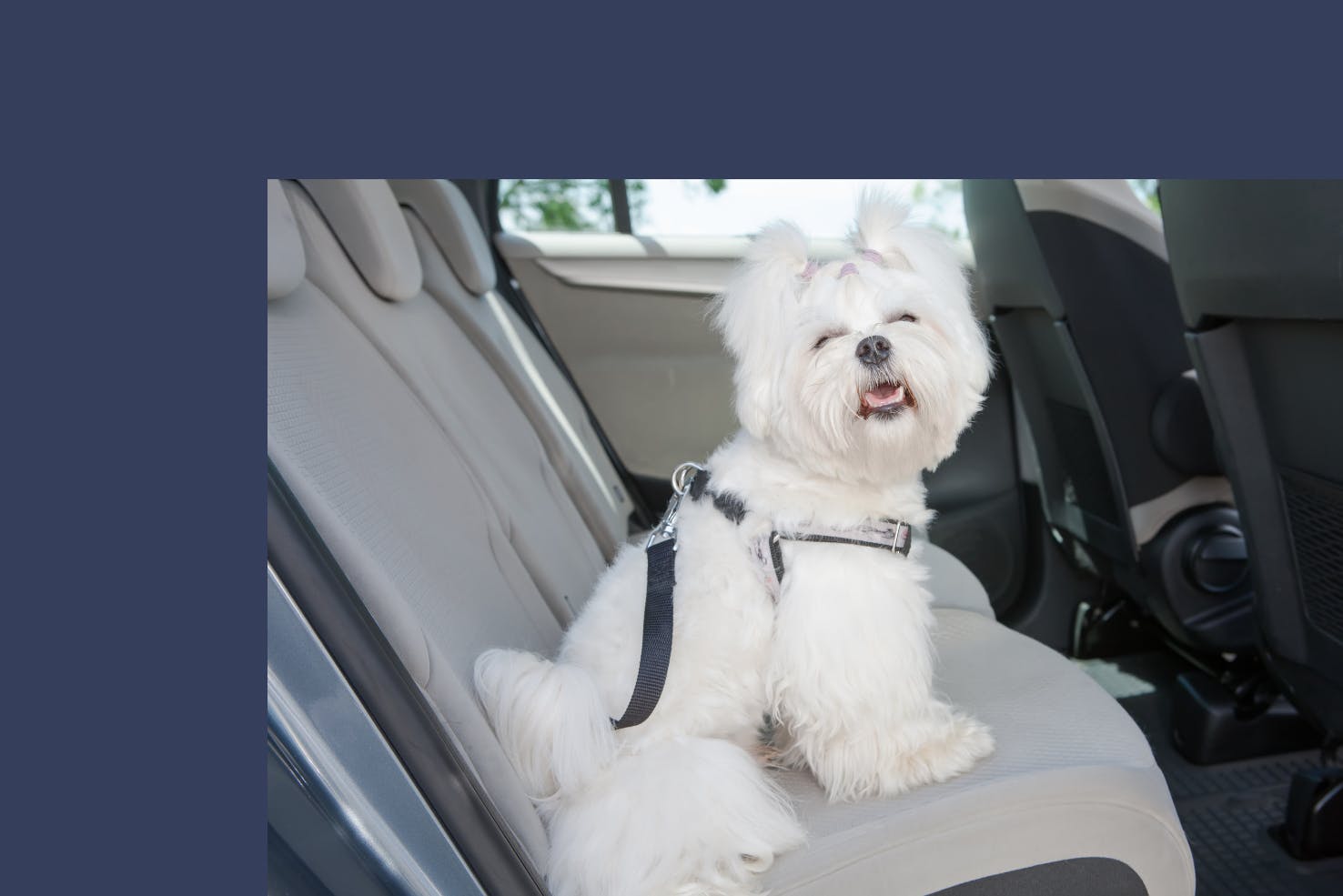
Written by Cory Warren
Veterinary reviewed by:
Published: 07/17/2019, edited: 01/30/2020
By Elizabeth Racine, DVM
For most dogs, a ride in the car is a blast. But for
some dogs, car rides can be scary or even nauseating. Your dog is always safer staying at home than
riding in the car, but sometimes traveling with your dog is simply
unavoidable. If your dog has trouble in the car, there are steps you can
take to help make the ride go more smoothly.
Car Anxiety in Dogs
The car can be a scary place for some dogs. The noise,
motion and other vehicles whizzing past can be overwhelming for a nervous
dog. Signs that your dog may be feeling anxious in the car include:
- Pacing
- Cowering
- Restlessness
- Panting
- Hypervigilance
- Barking at passing cars
- Trying to escape
If your dog is anxious in the car, you can help by showing
him that the car is a fun place to be! Start by having him sit in the car
while it’s parked and the engine is off. Offer him tasty high-value treats — something really good that he
doesn’t get very often. Reward him for lying down calmly while he is in
the car. Once he has gotten the hang of
this — and it may take several sessions! — you can turn the car engine on and
continue to reward him for calm behavior.
When he is comfortable with the
engine noise, you can gradually progress to having a friend drive the car while
you continue to reward your dog. Start
with short trips at first, such as around the block, and gradually build up to
longer sessions in the car. The key to this desensitization training is
to go at your dog’s pace and stop well before he reaches the point where he becomes stressed or anxious. With
time and lots of rewards, your dog can learn that the car is not scary after
all!
Car Sickness in Dogs
Some dogs - particularly young puppies — experience car
sickness just like humans do. This can also make them more prone to being
anxious during car rides. Signs that
your dog may be feeling nauseous in the car include:
- Panting
- Excessive salivation
- Frequent lip licking
- Vomiting during or after the ride
- Loss of appetite after the ride
Young puppies will often outgrow car sickness as they get
older. Many dogs will also do better having a window open and fasting for
a few hours before the car ride. You can also try to acclimate your dog
to the car by starting with short trips around the block and gradually
increasing the length of your drives. Still, in some dogs, car sickness
is a lifelong problem. In these cases,
it is best to avoid car travel as much as possible. If travel is necessary, your veterinarian can
prescribe medication to help control your dog’s nausea. Never give your
dog over the counter medications or those intended for humans without
consulting with your veterinarian first.
Safety first
Even when getting your dog accustomed to riding in a car,
safety should always be your top consideration. Surprisingly, one
survey reported that only 16 percent of pet parents use any kind of pet
restraint when driving with their dog. Consider padded harnesses that connect
to the car’s seatbelts or strapped-down crates. And since airbags can cause
pets serious injury, never let your dog ride in the front seat.
Car rides can be stressful for some dogs, but with patience
and practice, you may be able to help your dog learn to love riding in the car! Remember, for your dog’s safety you should never leave him unattended in any
vehicle — even if he loves the car.
Comments (0)
Leave a comment
Related articles
About Wag!
© 2025 Wag Labs, Inc. All rights reserved.
About Wag!
© 2025 Wag Labs, Inc. All rights reserved.
Security
© 2025 Wag Labs, Inc. All rights reserved.
